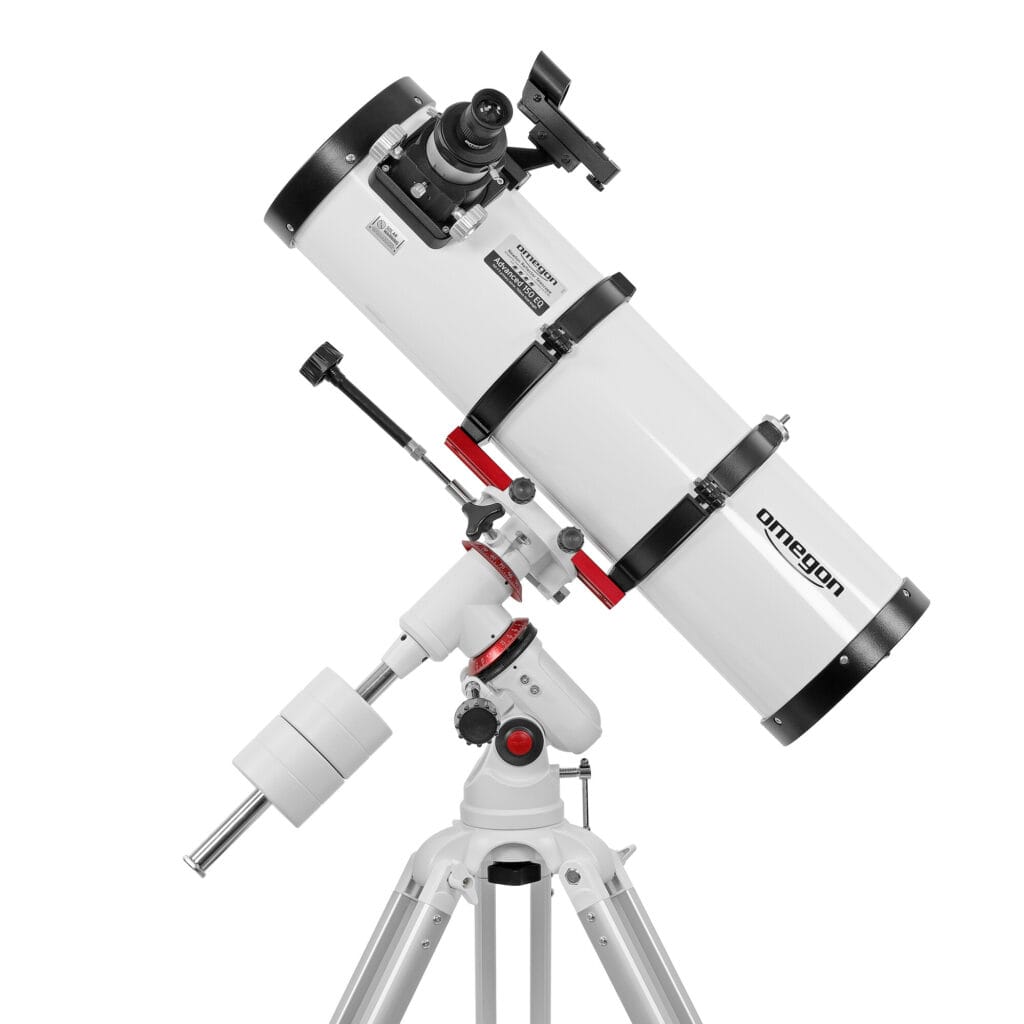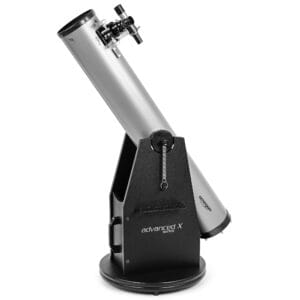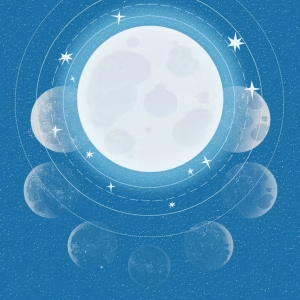The starry sky november 2025 is one of the most varied of the year. The days get shorter, the nights longer and darker. This is the time when autumn slowly turns into winter and the sky becomes full of bright stars, striking planets and shooting stars. Those who take the time to look up now discover how rich the stars and planets november 2025 are: from the ring planet Saturn to the meteors of the Leonids!
Whether you use binoculars, telescopes or just look up with your eyes the starry sky of november 2025 promises to be an impressive show.
The November 2025 night sky at a glance
✓ November 2 - The Moon at Saturn
✓ Nov. 5 - Full Moon (“Super Moon/Supermoon”
✓ Nov. 16-17 - Peak of the Leoniden meteor shower
✓ Nov. 21 - Uranus in opposition (visible all night)
✓ Nov. 22 - New Moon: darkest sky of the month
✓ Late November - Mercury well visible in the evening sky
The planets in November 2025
Jupiter shines like the brightest planet in the sky. In the early evening it is high in the south and is visible well into the night. Even with a simple telescope, you can see the bands of clouds and the four Galilean moons that change position every night. If you look closely, you can sometimes even see shadow transitions as one of the moons passes over the planet's disk.
Saturn remains the other great showpiece of the month. It is located in the constellation Aquarius and can be seen early in the evening, slightly lower than Jupiter. The ring planet remains a magical sight; even with a modest telescope of 90 mm aperture, the rings are clearly visible. With a larger scope (150 mm or more), the Cassini line also appears as a dark line between the rings.
Uranus reaches its opposition on Nov. 21, the moment when the planet is directly opposite the Sun in the sky. That means it is visible all night and relatively close to Earth. Uranus is not bright enough for the naked eye, but with binoculars or a telescope you can see a small blue disc.
Neptune is slightly further east in the constellation of Pisces. It too can be observed with a telescope, but requires more magnification and a dark sky.
Mercury surprised this year: in late November it rarely climbs high above the western horizon shortly after sunset. With an unobstructed view and clear sky, you can closely follow the fast-moving “little star” for a few days before it disappears again into the glow of the sun.
Venus still shines as a morning star early in the month, but later disappears from view. Mars plays a modest role this time and is too low above the horizon to observe well.
The moon, its influence and conjunctions
The Moon defines the atmosphere of the night in November. Early in the month she forms a beautiful conjunction with Saturn and Neptune, and on Nov. 5 she appears as a full “Beaver Moon.” That full moon produces spectacular photos, but makes the sky too bright for faint nebulae. After the full phase, its light gradually decreases and toward Nov. 22 it is New Moon. That is when the sky gets really dark and the stars and planets november 2025 are visible in their full glory.
During those dark nights, the Andromeda Nebula can be seen with binoculars as a faint oval patch. The Orion Nebula and the Double Cluster in Perseus also come alive when the moonlight is absent. This period is ideal for discovering or photographing deep-sky objects because the air is cool, stable and exceptionally transparent. We have had a lot of bad nights in October, cloudy and exceptionally wet...thankfully this is changing!
Falling stars on the night of Nov. 16-17
The starry sky november 2025 is further graced by the Leonids. This meteor swarm reaches its maximum on the night of Nov. 16-17. Around midnight, the constellation Leo rises above the horizon and activity increases. Under ideal conditions, dozens of shooting stars may be visible per hour. The New Moon falls favorably this year, making it dark enough to see even the fainter meteors.

Preferably go to an open field or the edge of a natural area, away from artificial light. Allow twenty minutes for your eyes to get used to the dark and look not straight up, but slightly oblique toward the east. Those with patience will be rewarded with bright streaks of light that traverse the sky for seconds, memories you won't soon forget.
The night sky in November: the arrival of winter images
If you look up in November, you will see the autumn sky gradually give way to the winter constellations. High in the eastern sky appears Orion, with its characteristic belt of three stars. Below the belt you will find the Orion Nebula (M42), one of the most beautiful nebulae you can observe even with a small telescope.
Above Orion stands Taurus (the Bull), with the open cluster of stars Pleiades (M45), a magnificent sight through binoculars. To the left of Orion appears Canis Major, with Sirius, the brightest star in the sky. To the north, the Great Bear and Cassiopeia remain clearly visible, helping to orient you while stargazing.
Deep-sky objects not to miss
- Andromeda Nebula (M31) - The nearest large galaxy, visible as a faint oval spot to the naked eye; through a telescope you can see the structure and accompanying galaxies M32 and M110.
- Orion Nebula (M42) - A giant gas nebula and nursery of new stars. Even in a 70-90 mm telescope you can see its nebular structure; larger scopes reveal details and color tones.
- Double cluster in Perseus - Two open star clusters right next to each other, spectacular in binoculars or at low magnification.
- Pleiades (M45) - Blue, young stars twinkling like diamonds in a bright blue nebula. A beautiful sight, even without a telescope.
Observation advisories for stars and planets November 2025
The best observations are made outside the city, far from lampposts and car lights. An open field, dune or heath offers a clear view to the horizon. Preferably use a red flashlight so that your night vision is preserved while you set up your telescope. Wear warm clothing; November nights can be surprisingly cold, especially in the second half of the month.
Plan your observations around the phases of the moon: planets are good to see at any phase of the moon, but for nebulae, star clusters and galaxies, the period around New Moon is best. Use an app or rotating star chart to know where the planets are. A pair of 10×50 binoculars is ideal for seeing the Pleiades, Andromeda and the moons of Jupiter, while a telescope with an aperture of 130-150 mm will reveal the rings of Saturn, the clouds on Jupiter and subtle colors in the Orion Nebula.
Realistic expectations
With the naked eye or simple binoculars, you can enjoy the Leonids, the Pleiades and the rising winter sky as early as November 2025. A small refractor telescope (70-90 mm) already shows the rings of Saturn and the moons of Jupiter. Those who own a larger scope (150 mm or more) also sees the Cassini line in Saturn's rings, cloud structures on Jupiter and subtle details in the Orion Nebula.

Don't expect colorful photographic images at the eyepiece, visually you'll see subtle hues and textures, but that's exactly what makes the experience authentic. Photography requires longer exposures, but modern smart telescopes can even do that automatically.
Above all, look up!
The starry sky november 2025 is rich in variety: from the ring planet Saturn to the Andromeda Nebula, from shooting stars to the rising of Orion. This is the month when the night takes on its winter character. Head out on a clear night, bring your telescope or binoculars and let the stillness of the sky take effect on you.
Those who have seen this once understand why November is one of the most beautiful months for stargazing every year.












